The Green And Digital, The Next Era...
- By Ertugrul Bahan
- February 24, 2025
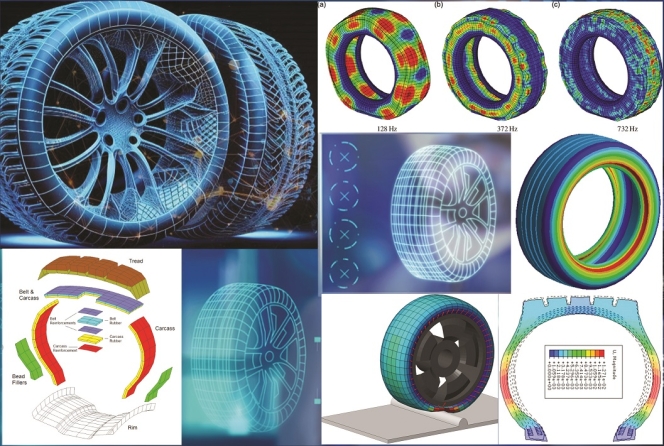
What does the future of tyre technology look like? The answer remains ‘pneumatic tyres’, but in the sense of greener and more digital technologies.
The ‘pneumatic tyre’ remains the only optimal long-term solution that meets expectations in all important technical parameters, even if tyre construction becomes more complex with each new vehicle generation. To the question ‘What does the future of tyre technology look like?’, the answer is still ‘pneumatic tyres’, but in the sense of greener and more digital technologies.
The increasing number of SUVs, electric cars and new types of vehicles lead to a change in tyre sizes in every markets. New vehicles come in different sizes, so the lifespan of common tyre sizes under same class vehicles available in the market is decreasing day by day. Therefore, successful SKU management and new technics are required for inventory management.
Electric cars are increasingly dominating the market with their larger load capacity, higher torque and higher requirements for tyre wear resistance. Tyres of electrical cars and SUVs are becoming larger and heavier, limiting opportunities to reduce total tyre weight on automobiles.
Electric vehicle-associated increase in average vehicle weight and acceleration speed requires changes in tyre design. Optimisation of the raw materials and chemicals used in the mix of compound formulations are certainly necessary.
 Tyres are still ‘black and round’, but they are constantly evolving towards ‘more efficient, smarter and safer technologies’. Lower skid depth but better wear resistance are common approaches to higher overall efficiency. Friction requirements must be balanced with tyre pattern for safety. Minor differences of patterns might change tyre responses unpredictably.
Tyres are still ‘black and round’, but they are constantly evolving towards ‘more efficient, smarter and safer technologies’. Lower skid depth but better wear resistance are common approaches to higher overall efficiency. Friction requirements must be balanced with tyre pattern for safety. Minor differences of patterns might change tyre responses unpredictably.
Of course, tyres must be durable and perform properly throughout their lifetime, but there are other requirements that must be met to be accepted on the market. The basic requirements are already included in the tyre regulation. The European tyre labelling system obliges tyre manufacturers to maximise the rolling resistance, wet grip and noise level of the tyres. In addition, it is an opportunity to enter the market with better tyre ratings.
Cold working is better for endurance and for better rolling resistance, but maintaining optimum grip performance is a challenge. Optimising wet grip and tyre wear are in conflict together with tyre handling, which is critical for safety. Likewise, better aquaplaning performance does not automatically mean better wet performance, and it is difficult to optimise both at one time. The same goes for noise and traction in wet conditions. Therefore, optimising and balancing different parameters is always a science in itself.
The increasing market penetration of electric vehicles and the associated increase in average vehicle weight and acceleration speed require changes in tyre design. Noise reduction and improved rolling resistance must be balanced by improved wear resistance. Given the enormous development of new generation alternatives in recent years, optimisation of the raw materials and chemicals used in compound formulations are certainly necessary.
Improving one performance parameter in the tyre industry often has a negative impact on another metric. The use of nanomaterials in tyre tread compounds let many of the metrics get better such as durability, wear and rolling resistance and wet performance.
Lower rolling resistance means less dynamic energy is required to maximise the vehicle’s range, which is crucial for electric vehicles. Low rolling resistance tyres make it possible to increase the range of electric vehicles by up to seven percent. Continental has announced the development of a special soft rubber tread compound that helps reduce rolling resistance and noise levels simultaneously, without compromising mileage.
Current tests show that the tyres of electric vehicles wear out 20 percent faster. This is due to the additional weight, the higher engine torque and the friction effects on the tyres when energy is recovered in coasting. Reduction of RR essentially requires a lower tread depth, but it also means the tyre lasts less time and generates more noise. However, the use of nanomaterials in tyre tread compounds, which manufacturers are experimenting with, improves durability, wear resistance and extends tyre life.
Nano-silica reduces rolling resistance, thereby improving fuel efficiency, while nano-clay improves thermal stability and provides consistent performance at different temperatures. Carbon nanotubes and graphene are used to improve the mechanical and electrical properties of tyre rubber, which improves tensile strength, elasticity and compensating low conductivity caused by the high silica content in the tread compound of current tyres. However, due to high cost and low availability, their widespread application in the tyre industry is limited.
Improving one performance parameter in the tyre industry often has a negative impact on another metric, such as efficiency, and comes at the expense of another metric, such as durability or wet grip. Silica nanoparticles improve wet grip in this respect by improving the tyre’s interaction with wet surfaces, thus increasing safety in adverse weather conditions.
By 2050, all tyres will be made from direct natural sources or recycled materials, which corresponds to the global goal of net zero CO2 emissions. Growing consumer awareness is also driving demand for products made from recycled materials.
In order to achieve carbon neutrality, a ‘sharp decline in demand for fossil fuels’ is expected in the global energy sector from 2040 onwards. ISO 14068 provides principles, requirements and guidelines for achieving and demonstrating carbon neutrality, with a focus on quantifying, reducing and offsetting the carbon footprint. Growing consumer awareness is driving demand for products made from recycled materials. Industry practices and market offerings are influencing new products.
Similar to the rapid and massive increase in investments in renewable energy and capacity expansions, the sustainable tyre materials market is also expected to witness strong growth. Manufacturers are exploring biodegradable materials and using recycled components to reduce environmental impact while ensuring that safety and performance are not compromised.
Major tyre manufacturers have already set themselves ambitious goals: by 2050, they are committed to use 100 percent sustainable materials in their production. From that date, all tyres will be made from direct natural sources or recycled materials, which corresponds to the global goal of ‘net zero CO2 emissions by 2050’.
Today, it is technically possible to extract ultrafine carbon black and pyrolysis oil from scrap tyres. Other achievements include the use of bio-based butadiene from wood biomass and other plant waste as a replacement for butadiene from petroleum, recycled styrene from plastics and polyester yarn obtained from recycled PET. The extraction of high-quality, reusable steel, gas and other new materials from scrap tyres is currently practiced by some tyre manufacturers.
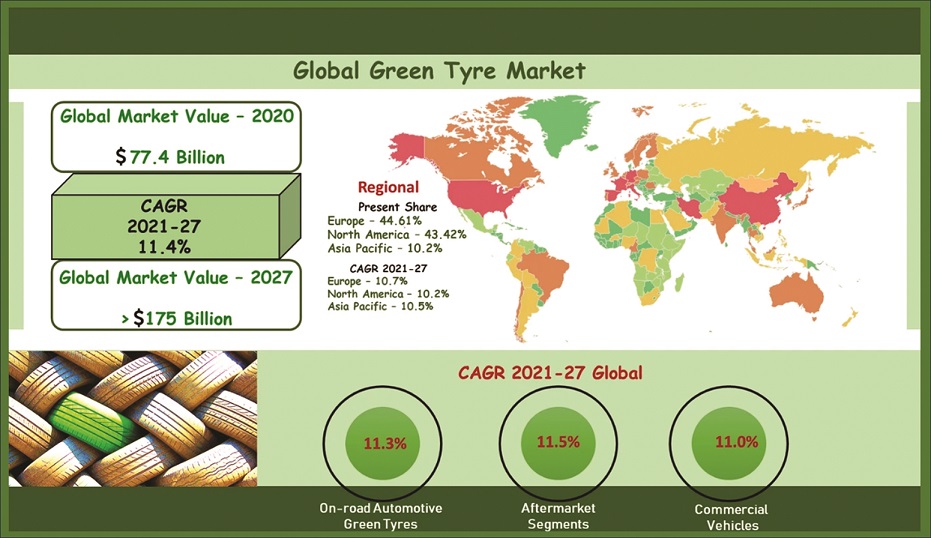
Tyre performance is experimented with virtual testing in extreme conditions and optimisation of tyre performance is possible before real prototypes come to life. Digitalisation offers endless possibilities for new horizons in tyre industry.
Digitalisation has revolutionised design, manufacturing, performance monitoring and durability of tyre technologies. ‘Smart tyres’ with ‘embedded sensors’ send real-time and continuous data such as pressure, temperature, tread depth and wear data to vehicle control systems and cloud platforms. Safety is provided by detecting early signs of wear or punctures.
Simulation in virtual environments allows understanding of tyre behaviour under different conditions such as temperature, pressure and road types. It is possible to reduce the number of physical prototypes and speed up tyre design cycles. Faster design and prototyping minimise the time spent on developing the tyre. Major tyre manufacturers already own simulator setups and software to virtually test vehicle and tyres altogether.
Virtual tyre testing and simulation uses AI for visualising tyre model behaviour and finite element analysis methods are used to calculate external heat, load or pressures impacts. Virtual models respond to forces, heat and wear effects. This enables virtual testing in extreme conditions and optimisation of tyre performance before real prototypes come to life. Digitalisation offers endless possibilities for new horizons in the tyre industry.
The tyre industry is increasingly placing emphasis on digital transformation and sustainability. ‘What’s next?’ is an open question for any technological industries. The ‘Next Step’ in tyre industry is the green and digital revolution. How this development is managed depends on the intellectual and technological capabilities of the tyre manufacturers.
Tire Rack Co-Founder Mike Joines Inducted Into Tire Industry Hall Of Fame
- By TT News
- November 05, 2025
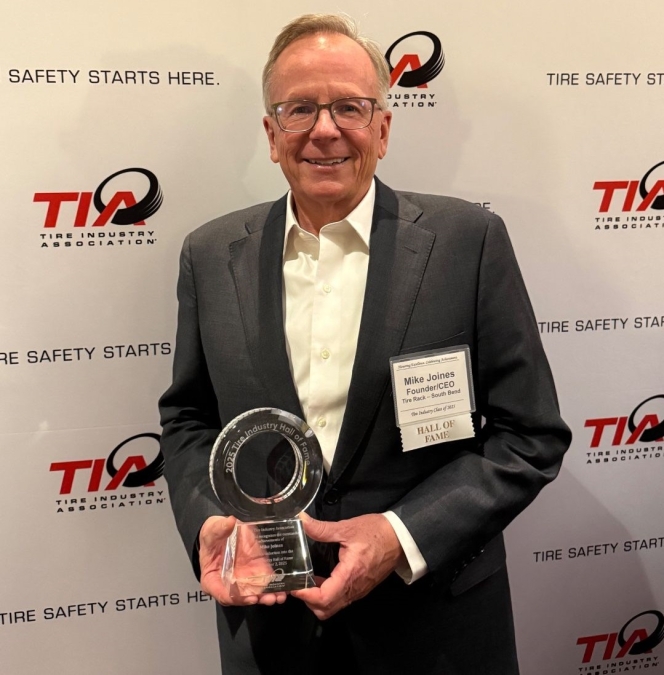
Tire Rack is celebrating the induction of its co-founder and longtime CEO, Mike Joines, into the Tire Industry Hall of Fame. The company credits Joines' automotive passion as the foundational spark for its mission to transform the tyre industry. Under his leadership, Tire Rack pioneered one of the first e-commerce platforms for tyre retailing, fundamentally changing how consumers research and purchase tyres.
The company’s philosophy, established by Joines, centred on empowering customers through comprehensive information rather than just completing a sale. This customer-first approach was built upon providing detailed product reviews, performance testing data, side-by-side comparisons and expert guidance.
Tire Rack also acknowledges that Joines understood the critical role of its team, noting that the ingenuity and integrity of its employees have been the true driving force behind decades of innovation and sustained customer trust. The company honours Joines as an enthusiast, innovator and leader whose devotion remains a source of inspiration.
Goodyear Posts USD2.2 Billion Quarterly Loss As It Completes Divestitures Under Goodyear Forward Plan
- By Sharad Matade
- November 04, 2025

Goodyear Tire & Rubber reported a net loss of USD 2.2 billion for the third quarter of 2025, weighed down by significant non-cash charges, even as its “Goodyear Forward” transformation programme continued to deliver strong operational benefits and major divestitures were completed.
The tyre maker said segment operating income rose to USD 287 million in the quarter, reflecting USD 185 million in cost-saving benefits from Goodyear Forward, which helped offset inflationary pressures, lower volumes and the absence of prior-year insurance recoveries.
“We delivered a meaningful increase in segment operating income relative to the second quarter in an industry environment that continued to be marked by global trade disruption,” said Mark Stewart, Chief Executive Officer and President. “This growth underscores our strong product portfolio and the consistency of our execution under the Goodyear Forward plan, both of which we expect to support further acceleration in our earnings during the fourth quarter.”
Goodyear’s quarterly net sales were USD 4.6 billion, with tyre unit volumes at 40 million. The company recorded a USD 1.4 billion non-cash deferred tax asset valuation allowance and a USD 674 million goodwill impairment charge during the quarter. Adjusted net income was USD 82 million, compared with USD 102 million a year earlier.
The company stated that all planned asset sales under its Goodyear Forward plan had now been completed, generating total gross proceeds of approximately USD 2.2 billion, which will be used to reduce debt and reinvest in growth.
On 31 October, Goodyear finalised the sale of the majority of its Goodyear Chemical business to an affiliate of Gemspring Capital Management, LLC, for USD 650 million, subject to adjustments. At closing, Goodyear received approximately USD 580 million in cash, which reflected working capital adjustments, including those for intercompany receivables.
“With the sale of our Chemical business, we have completed all of the planned asset sales included in our Goodyear Forward transformation program,” said Stewart. “Additionally, we surpassed initial expectations, with total gross proceeds from the divestitures of approximately USD 2.2 billion. As a result, we have a more focused, streamlined portfolio that will allow us to grow our core products and services and achieve our vision of being #1 in Tires and Service.”
The sale included Goodyear Chemical facilities in Houston and Beaumont, Texas, as well as a research office in Akron, Ohio. The company retains its chemical plants in Niagara Falls, New York, and Bayport, Texas, as well as the rights to the products produced there.
By region, the Americas segment reported third-quarter sales of USD 2.7 billion, a 4.2 percent year-over-year decline, as replacement tyre volumes decreased due to high inventories of imported products in the US market. Segment operating income fell to USD 206 million from USD 251 million.
In Europe, the Middle East and Africa (EMEA), sales rose 4.4 percent to USD 1.4 billion, supported by favourable currency movements and stronger price/mix. Operating income increased to USD 30 million from USD 23 million a year earlier.
Asia Pacific sales fell 18.9 percent to USD 501 million, reflecting the sale of the Off-the-Road (OTR) tyre business and softer demand in Japan, Australia and China. Segment operating income dropped to USD 51 million from USD 72 million.
Goodyear said it expects to achieve about USD 1.5 billion in annualised run-rate benefits from the Goodyear Forward programme by the end of 2025.
Nitto Tire’s Tomo Mizutani inducted into Tire Industry Hall of Fame
- By TT News
- November 04, 2025

Tomoshige “Tomo” Mizutani, advisor and former Chairman and Chief Executive of Nitto Tire USA Inc., has been inducted into the Tire Industry Hall of Fame, one of the sector’s most prestigious honours.
The induction, hosted by the Tire Industry Association (TIA), will take place in Las Vegas alongside the 2025 SEMA Show, running from November 4 to 7.
With more than four decades in the tyre industry, Mizutani is widely credited with transforming Nitto Tire USA from a struggling operation in the early 1990s into a billion-dollar brand recognised for its innovation, performance, and strong connection with car enthusiasts.
“Our 2025 inductees embody the spirit of innovation and service that defines the tyre industry,” said Dick Gust, CEO of the Tire Industry Association. “Their contributions have improved safety, expanded opportunity, and shaped the way we do business worldwide.”
Mizutani’s approach combined deep market insight with bold risk-taking. By engaging with emerging communities of young car enthusiasts and later expanding into the off-road segment, he helped reposition Nitto as a brand built around passion and creativity.
Known for embracing innovation, Mizutani was among the first to champion enthusiast-driven product development and leverage digital and social media marketing to build brand loyalty. Under his leadership, Nitto cultivated a social media community exceeding 13 million followers, making it one of the most engaged automotive brands online.
“When new game-changing innovations would arise,” Mizutani said, “we viewed them as huge opportunities instead of risks.”
A frequent speaker at leading universities and industry events, Mizutani has shared his philosophy of creativity, resilience and perseverance with aspiring business leaders, often reminding audiences to “never ever give up.”
“This honour is beyond my dreams,” Mizutani said. “I’ve been privileged to meet and learn from industry legends who inspired me since my first day in America. I am deeply grateful for the incredible people who have guided, challenged, and supported me throughout my journey.”
Nokian Tyres Reports Fivefold Profit Jump as Pricing Pushes Offsets Market Weakness
- By TT News
- November 04, 2025
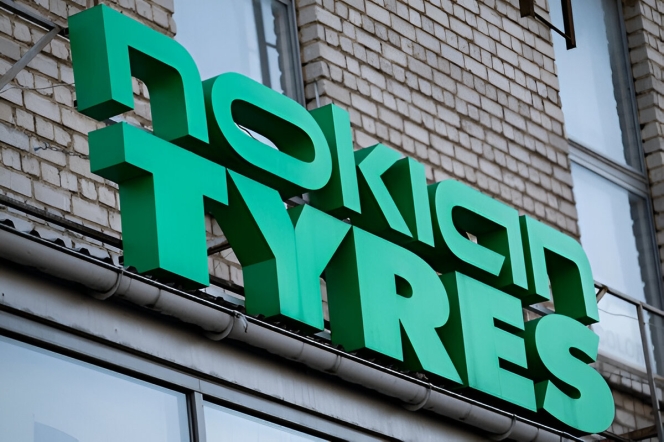
Finnish tyremaker’s third-quarter operating profit surges 427 percent to 21.8 million euros. Romanian factory ramp-up progressing as planned, now operating 24/7. Heavy investment phase nearing its end as the company targets a cash flow turnaround.
Finnish tiremaker Nokian Tyres reported a more than fivefold increase in third-quarter operating profit, as aggressive pricing increases in passenger car tyres and improved manufacturing efficiency offset challenging market conditions and years of operational upheaval.
The company, known for its winter tyres, said operating profit jumped 427 per cent to 21.8 million euros ($23.7 million) in the July-September period from 4.1 million euros a year earlier, when results were dragged down by 13.3 million euros in inventory write-downs related to contract-manufactured products.
Net sales grew 10.8 percent to 344.1 million euros at constant exchange rates, with the company achieving growth across all regions despite what it characterised as stable replacement tyre markets in Europe and declining conditions in North America.
“I have to say that I’m very pleased to tell you that we are really moving in the right direction,” President and Chief Executive Paolo Pompei told analysts on a conference call. “Our operating profit increased significantly. Obviously, this is very encouraging for the future journey that we have ahead.”
Pricing Strategy Delivers Results
The improvement was driven primarily by price increases implemented from late in the first quarter onward to offset rising raw material costs and to reposition products in Central Europe and North America, Pompei said.
In the passenger car tyre segment, which accounts for the bulk of Nokian’s business, net sales rose 13.2 percent to 234 million euros, whilst segment operating profit climbed to 38.9 million euros from 34.4 million euros. The segment’s operating margin rose to 16.6 percent, up from 16.4 percent a year earlier.
Interim Chief Financial Officer Jari Huuhtanen said price and mix effects contributed a positive 35 million euros to operating profit in the passenger car tyre segment in the quarter. However, this was partially offset by 25 million euros in supply chain costs, related mainly to non-recurring items from the previous year.
“Our average sales price with comparable currencies improved, and the sales of higher than 18-inch tyres increased significantly,” Huuhtanen said. “Segment operating profit improved due to price increases and a favourable product mix.”
Pompei acknowledged that volume declined 3.3 percent in the quarter but said this was “well justified by the comparability with the previous year, due to the action we made in order to release the slow-moving stock that we have accumulated due to the crisis in the Red Sea channel.”
Asked about the sustainability of price increases, given that larger competitors have recently lowered their price-mix assumptions, Pompei said: “We cannot keep increasing pricing. It was extremely important for us, again, to compensate for the increase in rising raw material costs and, at the same time, to gradually reposition in Central Europe and in North America.”
He added that the company was “not expecting the price increase to affect volume at this stage” beyond the comparison effects from last year’s inventory clearance.
Romanian Factory Hits Milestone
The company’s new factory in Oradea, Romania - described as the world’s first full-scale zero-CO2-emissions tyre factory - is progressing according to plan and is now operating four shifts to enable round-the-clock production.
Nokian said it would deliver approximately one million tyres from the Romanian plant this year, up from zero in 2024. The factory began customer deliveries in the second quarter.
“One million is the production, but the capacity already by the end of the year will be up to three million pieces and up to the end of next year, up to six million pieces,” Pompei explained. “We need to distinguish between production and capacity.”
He said the remaining capacity expansion would focus on mixing and semi-finished product lines rather than curing and building machinery, meaning capital expenditure requirements would be “really limited” for the next three years.
The Romanian facility has launched two new product lines for Central and Southern European markets, most recently the Powerproof 2, a premium ultra-high-performance summer tyre unveiled at an event in Spain attended by 160 guests from across the region.
Pompei said that in future, “more than 80 percent of what we sell in the European market will be supported by our Romanian factories for Central Europe as well as South Europe.”
North America Shines, Heavy Tyres Struggle
North America emerged as a standout performer, with sales surging 27 percent despite a declining market, driven by favourable tariff developments.
“We are finally doing extremely well in North America, and we are very pleased with the journey that we have done so far,” Pompei said.
Canada removed 25 percent counter-tariffs on U.S.-produced tyres on 1 August, whilst the United States reduced tariffs on EU tyre imports from 25 percent to 15 percent on 1 September. Nokian produces approximately 85 per cent of its U.S. volume at its Dayton, Tennessee, facility.
“Obviously, today we are in the ideal situation to deliver tyres from the US to Canada without duties,” Pompei said.
The company also disclosed a new partnership with American Tire Distributors (ATD), the largest national distributor in the United States. However, Pompei noted exposure was “relatively low” as the relationship was beginning.
However, the heavy tyres division struggled, with net sales falling 4.4 per cent to 55.4 million euros at constant exchange rates, as weakness in truck and agricultural tyre markets persisted. Segment operating profit dropped to 5 million euros from 7.5 million euros, impacted by lower volumes and inventory revaluation effects.
Asked when the agricultural market might recover, Pompei said: “I believe the agri business in particular is subject to cycles, and cycles can be long or short, but in general, obviously, we are now landing at the end of the second, I would say almost the second year of a downturn.”
He added: “I’m expecting the agri business at the level in particular to recover pretty soon in the next six to 12 months.”
Winter Season Outlook, Efficiency Drive
Looking ahead to the crucial winter tyre selling season, Pompei said the weather in September had been “a little bit too warm” but conditions were improving.
“Now it is getting colder, both in the Nordics as well as in North America,” he said. “We are expecting the winter tyre season to basically start, as I speak in this moment in November.”
The company’s flagship winter products continued to receive strong reviews, with the Hakkapeliitta 10 studded tyre and Hakkapeliitta R5 non-studded tyre taking top positions in multiple European tyre tests.
Nokian also announced it had begun personnel negotiations in Finland regarding efficiency improvements, which have resulted in eight permanent white-collar job cuts.
“This is part of our journey when we want to improve efficiency and productivity,” Pompei said. “This is necessary to support the company in this journey.”
The company’s Vianor retail chain reported improved performance, with net sales rising 7 per cent at constant exchange rates to 74.9 million euros, whilst the segment’s operating loss narrowed to 6.4 million euros from 6.6 million euros.
Nokian maintained its 2025 guidance unchanged, expecting net sales to grow and segment operating profit as a percentage of net sales to improve compared with the previous year.
The company said tyre demand in its markets is expected to remain at 2024 levels. However, it cautioned that “development of the global economy as well as geopolitical, trade and tariff uncertainties may cause volatility to the company’s business environment.”
For the first nine months, net sales grew 9.4 percent to 957.3 million euros, whilst segment operating profit rose to 40.2 million euros from 35.4 million euros. Segment EBITDA margin improved to 14.1 percent from 13.5 percent.
Asked about margin volatility in the passenger car segment, which has swung sharply on a quarterly basis over the past two years, Pompei said stability should improve.
“Of course, you will see more stability in the development of the margins moving forward, because now, finally, we can leverage our increased capacity, we can leverage an efficient manufacturing footprint,” he said.


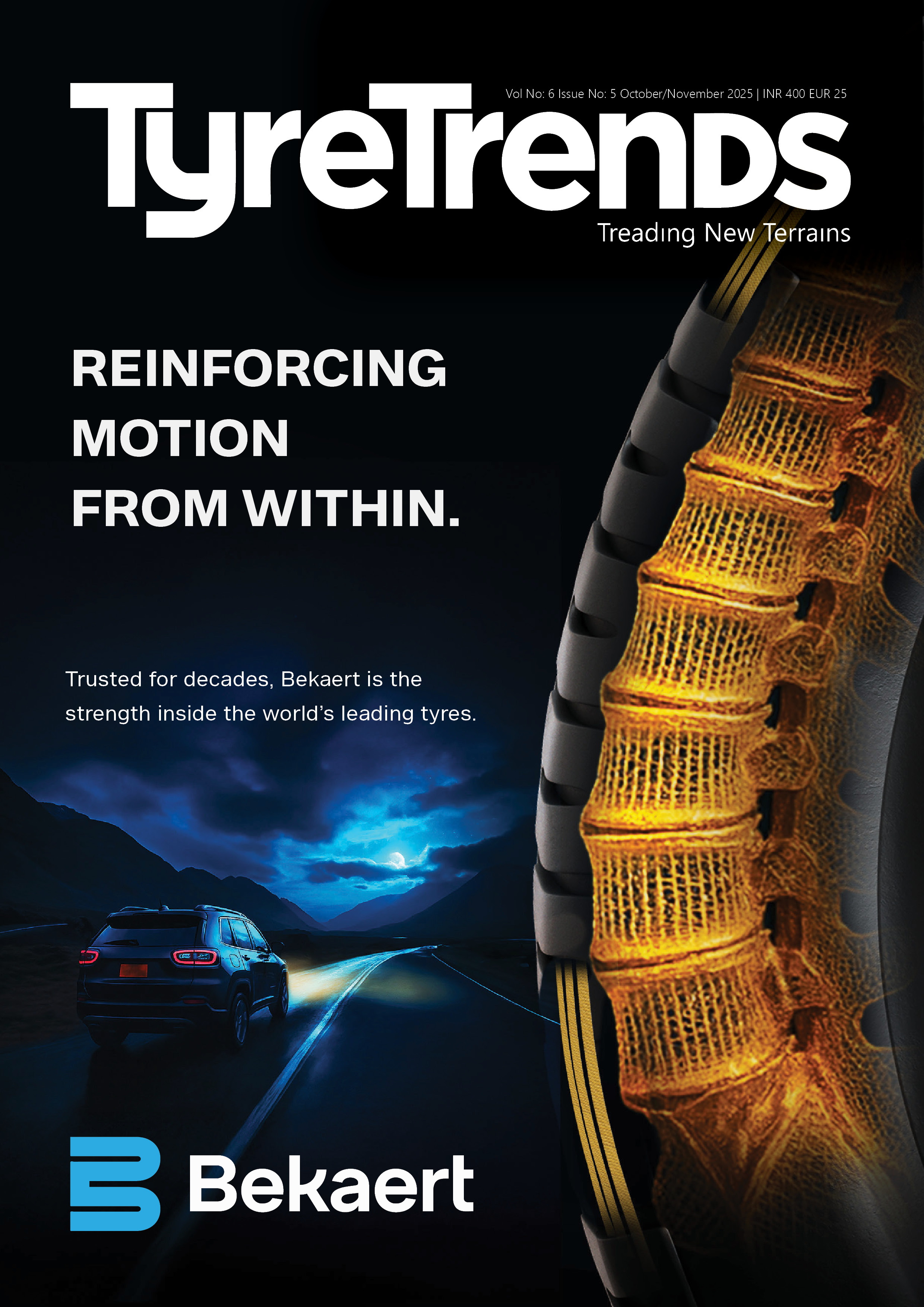
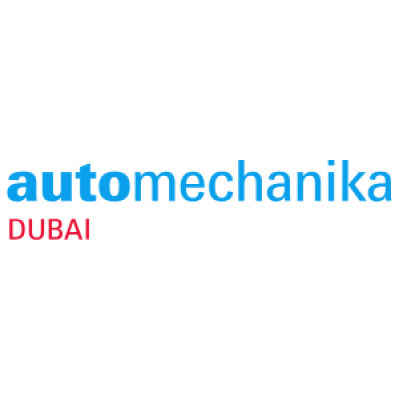



Comments (0)
ADD COMMENT